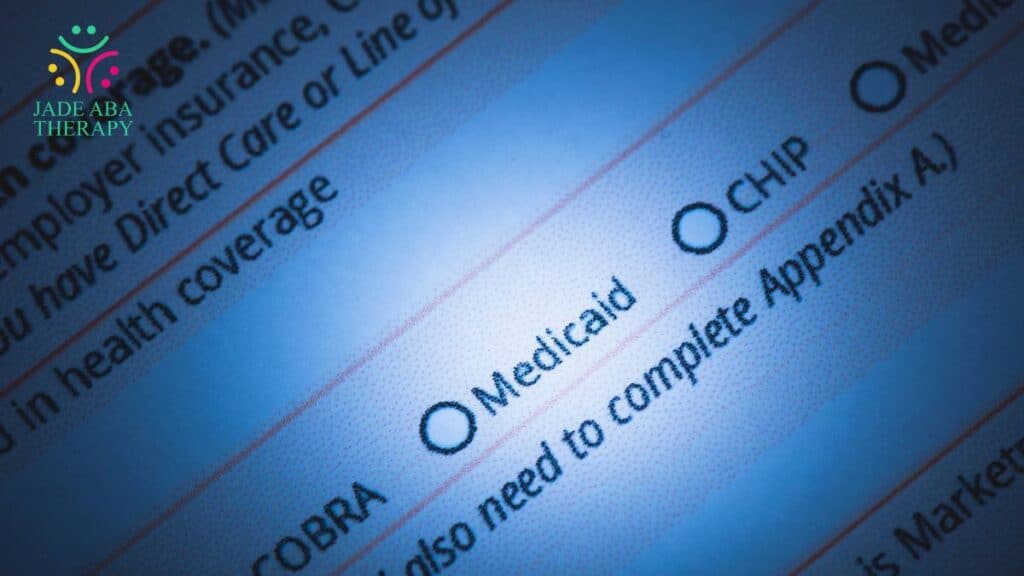Key Points:
- ABA therapy cost in Maryland depends on service type, provider credentials, and insurance rules.
- Most state-regulated plans cover ABA as a medically necessary habilitative service, while Medicaid pays set rates around $76–$97 per hour.
- Families lower costs through FSA/HSA funds, prompt-pay discounts, and early insurance authorization.
Budget fears rise fast when autism therapy bills start arriving. Those who are searching for “ABA therapy cost Maryland” want clear numbers, what insurance covers, and how to keep balances lower. Applied Behavior Analysis (ABA) uses structured teaching to build skills at home and in the community.
The sections below show what Maryland plans usually pay, how to estimate session costs, and practical steps that cut out-of-pocket bills without delaying care.

What Drives ABA Therapy Cost in Maryland?
ABA therapy cost Maryland-wide depends on several levers: clinical intensity, who delivers the service, and payer rules. Sessions often mix BCBA direction, technician hours, and parent training. Plans authorize care in “units” of 15 minutes using CPT codes. That mix influences both the claim total and your share.
Common drivers include:
- Service type and code. Direct treatment by a technician (97153), BCBA direction or modification (97155), family guidance (97156), and assessment (97151).
- Provider credentials. BCBA and RBT roles influence allowed amounts and supervision needs.
- Setting and scheduling. In-home ABA in Maryland can change travel time and unit mix compared to center visits.
- Authorization rules. Prior auth, medical necessity notes, and progress updates shape approved hours.
- Plan type. State-regulated plans, self-funded employer plans, TRICARE, and Medicaid follow different fee schedules and rules.
Quick estimate method:
- List planned weekly hours by code.
- Multiply units (4 per hour) by the allowed amount per code.
- Apply your plan’s cost-share (copay or coinsurance) until you hit the deductible and, eventually, the out-of-pocket maximum.
Use this method before the first session so there are no surprises when EOBs arrive.
Is ABA Covered by Maryland Plans? What Usually Gets Approved?
Maryland insurance law treats ABA as a habilitative service for children, meaning coverage helps a child gain or improve skills. For plans regulated by Maryland, insurers may not impose arbitrary visit caps on medically necessary habilitative services.
Coverage still depends on medical necessity, prior authorization, and plan insurance details. Maryland Insurance Administration
Important distinctions:
- State-regulated plans (individual plans bought in Maryland and fully insured employer plans issued in Maryland) follow Maryland’s habilitative services rules.
- Self-funded employer plans (common for large employers) are not subject to state benefit mandates and set their own ABA rules. The Maryland Insurance Administration explains that only plans subject to Maryland law must follow the state’s habilitative service requirements.
- Maryland Medicaid coverage supports medically necessary ABA for members under 21 through EPSDT. Maryland partners with Carelon Behavioral Health to administer approvals and provider support.
Coverage scope often includes assessment, direct treatment, BCBA direction, and parent training when medically necessary and documented in the treatment plan.
How Much Does ABA Therapy Cost Without Insurance?
Families ask about, “How much does ABA therapy cost without insurance?” because self-pay rates vary by provider, credentials, and session length. One grounded reference point is the Maryland Medicaid ABA fee schedule. For 97153 (adaptive behavior treatment by protocol):
- RBT rate: $19.17 per 15 minutes (~$76.68 per hour)
- BCBA rate: $24.41 per 15 minutes (~$97.64 per hour)
These are Medicaid allowables, not private-pay prices, but they offer a transparent baseline for unit-based math when you estimate out-of-pocket totals.
If paying cash, ask providers about:
- Prompt-pay discounts for same-day payment.
- Package pricing for bundled weekly hours.
- Shorter start-up blocks for toddlers while paperwork completes.
- Group sessions where clinically appropriate, which can lower per-hour charges.
- Starting ABA in Maryland often includes parent training, which can be scheduled by telehealth when appropriate.
When comparing ABA therapy cost per session across clinics, confirm which codes and credentials are included so quotes line up apples-to-apples.

Deductibles, Copays, and Caps: What Limits Your Spending?
Annual plan design often matters more than the sticker price per hour. For 2025, Marketplace plans cannot set an out-of-pocket maximum higher than $9,200 individual / $18,400 family. Once you reach that ceiling with in-network, covered services, the plan pays the rest of covered ABA for the year.
Translate that to action:
- Know your deductible. Early in the year, coinsurance applies until the deductible is met.
- Track toward the OOP max. High ABA volumes can push you to the cap, after which covered services cost $0 for the rest of the year.
- Use in-network insurance. Out-of-network costs may not count toward the cap on some plans.
If your child needs steady hours, front-loading sessions after benefits reset can reach the cap sooner and reduce later bills.
Out-of-Pocket Tips Families Actually Use
Families reduce ABA bills with small moves that add up. Try these ideas while keeping the treatment plan intact.
Ask about coding and scheduling
- Align sessions so fewer short visits become longer blocks, reducing drive time charges if applicable.
- Confirm whether some BCBA direction can be batched alongside technician sessions on the same day.
Use benefits you already have
- FSA/HSA dollars can cover qualified ABA expenses; ask your plan about documentation.
- Secondary coverage (Medicaid as secondary, if eligible) can mop up coinsurance after primary pays.
Make approvals easier
- Keep consistent data and goals in the plan; approvals follow clear progress notes.
- Respond fast to payer requests for records to avoid denials.
Check group and caregiver sessions
- Group treatment or family guidance (97156) may fit goals and come at a lower unit cost than one-to-one in some schedules.
If a plan denies hours, request criteria and submit a concise letter, new goals, and recent data. The Maryland Insurance Administration outlines appeal rights for plans under state law.

Maryland Medicaid & EPSDT: What Should You Expect?
Maryland ABA through Medicaid requires an ASD diagnosis, a treatment plan, and prior authorization. The state confirms coverage for medically necessary ABA under age 21 and delegates day-to-day program operations to Carelon Behavioral Health. Providers submit plans, track data, and request continued authorization as goals progress.
Why EPSDT matters:
- EPSDT requires coverage of services to “correct or ameliorate” conditions for members under 21, which often includes ABA when medically necessary.
- Maryland publishes fee schedules so families and providers can see allowed amounts by code.
Use this data to forecast monthly costs and to confirm that billed units match what was authorized.
ABA Insurance Landscape: What Do States Require?
Families relocating or using out-of-state employer plans ask if ABA is covered elsewhere. Research shows all 50 U.S. states have enacted mandates requiring insurers to cover autism-related services in state-regulated plans, though requirements and limits vary by state.
What this means for you:
- A Maryland fully insured plan will follow Maryland’s habilitative rules.
- A self-funded plan can set different ABA policies even if you live in Maryland. Ask HR for the Summary Plan Description and ABA criteria.
ABA Therapy Cost Maryland-wide: Real-World Scenarios
Use these examples to stress-test your budget. Adjust the numbers with your plan’s actual deductible and coinsurance.
Scenario 1: 10 hours/week, mixed services
- 8 hours technician (97153) + 2 hours BCBA direction (97155).
- Estimate with your plan’s allowed amounts or, for a transparent floor, the Maryland Medicaid schedule for each 15-minute unit.
- Apply coinsurance until you meet the deductible; track progress toward the OOP max.
Scenario 2: Toddler start-up
- 3 hours assessment (97151), 6 hours technician, 1 hour family guidance (97156).
- Ask the clinic to batch BCBA direction on days with technician care to reduce extra travel time and keep billing tidy.
Scenario 3: Midyear switch
- When changing providers, get the used deductible and accumulated OOP totals from your insurer so the new clinic bills correctly from day one.

How to Verify Coverage for ABA Services in Maryland
Families move faster when paperwork starts early. Use this checklist to set things up.
- Call the plan and ask for benefits under “habilitative services” and “applied behavior analysis Maryland” for your child’s diagnosis. Confirm deductible, coinsurance, and out-of-pocket maximum.
- Request medical policy and prior authorization criteria for ABA hours, including documentation required after the first authorization period.
- Confirm network status of the clinic and the supervising BCBA.
- Ask about telehealth for family guidance when appropriate.
- Get single-case agreement steps if your preferred provider is out-of-network.
- For Medicaid, review the Maryland ABA page and note that Carelon manages clinical reviews.
Bring this list to the intake call so coverage checks finish quickly.
Out-of-Pocket Playbook: Small Moves That Lower Bills
- Schedule with intention. Fewer, longer visits reduce repeated travel windows and may cut non-billable time.
- Choose in-network first. Use out-of-network only when medically justified and approved.
- Use plan tools. FSA/HSA funds, payment plans, and itemized receipts help cash flow.
- Share school reports. Teacher data often supports medical necessity for continued hours.
- Audit EOBs. Match units, codes, and dates to the treatment plan; ask the clinic to correct errors.

Frequently Asked Questions
Is ABA covered by insurance?
ABA therapy is covered by most Maryland state-regulated insurance plans when deemed medically necessary as a habilitative service. Coverage depends on plan type, prior authorization, and specific medical policies. Self-funded employer plans set their own criteria, so review the Summary Plan Description and ABA policy before starting.
Why would insurance deny ABA therapy?
Insurance may deny ABA therapy due to missing authorizations, incomplete documentation, or insufficient proof of medical necessity. Denials also occur when self-funded plans exclude ABA coverage or requests exceed policy limits. Families should request written reasons, review criteria, and appeal with updated goals and BCBA data.
What if I can’t afford ABA therapy?
If you can’t afford ABA therapy, ask providers about payment plans, prompt-pay discounts, or sliding-scale options. Check Medicaid or secondary insurance eligibility and use FSA or HSA funds. Lower-cost options like group sessions or telehealth parent training can help until out-of-pocket maximums reduce costs to $0.
Start ABA With Clear Costs and a Plan
Understanding ABA services in Maryland from a benefits and billing angle helps families protect budgets while keeping care steady. Transparent fee schedules, clear goals, and early authorizations remove guesswork and keep treatment moving through approvals.
At Jade ABA Therapy, we offer in-home ABA therapy in Maryland and Virginia delivered by trained teams who coordinate closely with caregivers and payers. We share estimates before sessions begin and help families track deductibles, coinsurance, and progress toward out-of-pocket caps so monthly costs stay predictable.
If you want a cost-literate start that aligns hours with goals, reach out to schedule an intake and see how a personalized plan can fit your child’s needs and your budget.




